Thermoforming is one of the important production methods for automotive interior parts, and it is one of the methods currently used to achieve softness in most interiors. The main advantages of the vacuum adsorption molding process are small mold investment, long life, and high production efficiency.
Thermoforming products are widely used in the electronics and electrical appliance industries, food industry, hardware tools, cosmetics industry, toy industry, daily necessities industry, medical devices, health care products, automobiles, stationery, cultural and sports supplies and other industries. This article will introduce the thermoforming process.
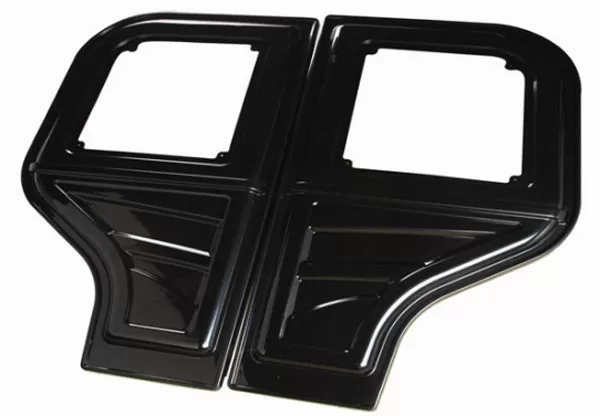
Thermoforming Process
Vacuum forming refers to a molding method in which vacuum pores are opened in the upper or lower mold of the mold, and the pressure generated by the vacuum is used to make the leather surface and the mold fit more closely, thereby making the appearance of the product more in line with the design requirements. If the PP foam layer has a rubber surface, the body needs to be heated. If the PP foam layer does not have a rubber surface, adhesive needs to be sprayed on the pre-bonded surface of the body before molding.
Automotive Thermoforming Tnterior Parts
Car interiors parts include door decorations, compartment partitions, instrument panels, center consoles, armrests, carpets, seats, and roof panels. These components can be made of metal, plastic sheets, or wood products.
When manufacturing these devices, if wood materials are used, the overall manufacturing price of automobiles will increase, which will have a certain impact on the actual sales volume, in the lower-end automobile manufacturing industry, metal materials are more common, but their feel when used is both the car and the comfort are lacking, and if thermoformed plastic is used, the problems of car reflection and driving space will be effectively improved.
It is not only cost-effective, but also can effectively improve the comfort of the car body. Therefore, the application of plastic materials in automobile interior and exterior decoration has gradually become a trend in the development of the automobile industry.

Thermoforming Manufacturing Process
1. First, rapid prototyping. Obtain the plastic injection molded parts body through the injection molding.
2. Drill holes on the body. The holes are about 0.8mm. The distribution method is to distribute less and more uniformly on the surface with small changes in curvature. Surfaces with large changes in curvature, such as rounded corners, surface changes, etc., have more and more holes. dense.
3. Surface grinding, the purpose is not to leave plastic residue and burrs produced by drilling on the surface.
4. Spray glue on the surface of the plastic parts, bake the plastic parts, and increase the temperature of the parts to about 50 degrees (mainly to ensure the appropriate working temperature of the glue).
5. Heating the skin, the heating temperature should be close to its plasticizing temperature.
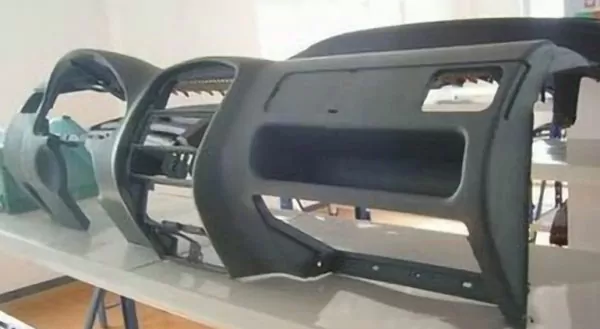
6. Place the plastic parts sprayed with glue on the mold on the pressure forming equipment, place the PVC skin flat on it and place it in the air. Apply vacuum to form it instantly, and then keep it for a period of time. Finally, cut the skin and take out the workpiece.
7. After passing the inspection, remove excess epidermis.
8. Then perform manual reverse packaging.
For example, the base material of the interior door panels is PP material. The base material acts as a skeleton support, and the skin is made of polyvinyl chloride (PVC) calendered film, which vacuum-adsorbs the skin to the base material.
Factors Affecting the Production Process of Automotive Industry Thermoformed Components
In actual production, due to the influence of thermoplastic materials, processes, environment and other factors, plastic components will have quality problems such as glue opening, skin rupture, wrinkles, bubbles and other defects. Here we propose corresponding solutions to the causes of the above quality problems.
The main influencing factors of the vacuum forming process are glue activation temperature, skin temperature, vacuum pressure, and pressure holding cooling time.

Glue Activation Temperature
The bonding performance of the glue affects the quality of the bonding effect. The base material (PP material) is flame treated to make its surface tension reach more than 38 dynes, and then the glue is evenly sprayed on the base material to make the glue form dots. distributed. According to the glue activation temperature, ensure that baking can reach the glue activation temperature to ensure the best bonding force.
Skin Temperature
Skin temperature is a key factor in the entire vacuum adsorption process. The appropriate temperature of the skin is determined by the properties of the calendered film and the properties of the adhesive. The baking temperature of the skin is determined by its properties.
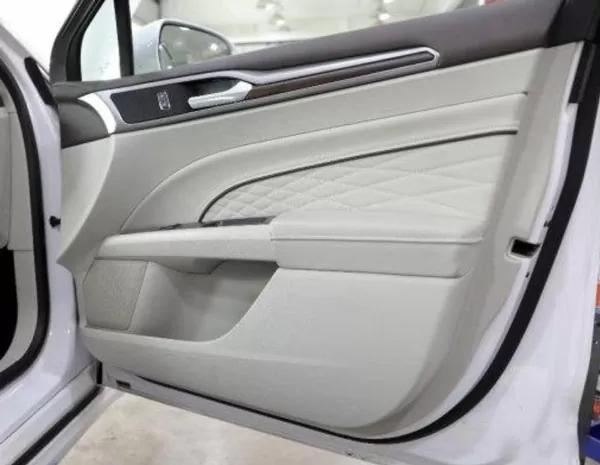
For example, the baking temperature of PVC skin should not be too high. If it is higher than 160°C, the PVC skin will decompose and produce a pungent smell. It cannot be too low. If it is too low, the PVC skin will not soften enough and deform, failing to meet the molding requirements. A reasonable heating temperature should be close to its plasticizing temperature. But it does not exceed the plasticizing temperature. In addition, due to the poor thermal stability of the PVC skin, it is necessary to allow the PVC skin to reach the deformation temperature at a faster speed during baking, and to form and cool it in a shorter time, which is beneficial to the PVC skin maintaining its original characteristics. .
Vacuum Pressure
The greater the vacuum pressure, the better the bonding effect between the skin and the base material. The current vacuum pump can easily provide a vacuum degree with a negative pressure of 0.09 MPa or above. However, due to the discontinuity of the continuous production process, the vacuum degree will fluctuate greatly. The empirical value is that the vacuum degree is not less than the negative pressure of 0. 08 MPa, and two vacuum pumps are used to evacuate, and a vacuum tank is added for gas storage to reduce the fluctuation of the vacuum degree during continuous production.
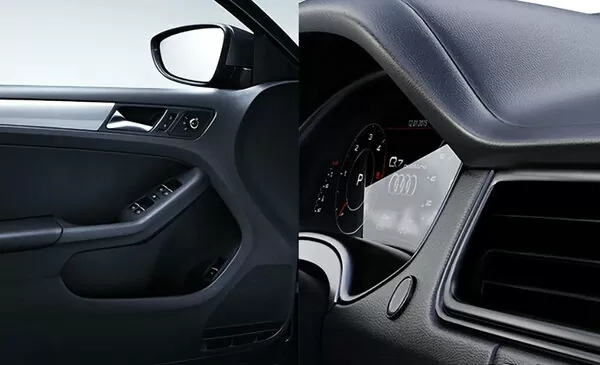
Pressure Cooling Time
The bonding between the skin and the base material needs to be maintained under a certain pressure for a period of time before a high initial bonding force can be achieved. Therefore, vacuum adsorption must be maintained and cooled before the mold can be released. Since this process is completed on the mold, if the holding and cooling time is too long, it will affect the production efficiency, and if it is too short, it will affect the bonding effect and easily cause defects such as separation of the skin and the base material.
Thermoforming Defects
The main defects of vacuum forming are: glue opening, skin rupture, bubbles, and wrinkles.
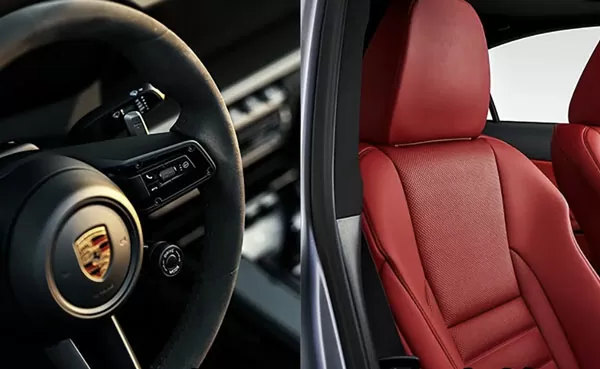
Ungluing
Ungluing is one of the common defects of vacuum adsorption. After the skin and the base material are vacuum adsorbed, the internal stress of the skin is insufficiently released during the cooling and holding time. There is a tendency to shrink during storage and use, and the tensile deformation occurs. The shrinkage stress in the larger recessed area pulls away the bonding interface and forms a glue opening defect.
The main reason: mainly due to poor flame treatment of the substrate. PP is cheap, corrosion-resistant and has high specific strength. It is a semi-crystalline structure and the crystals are usually spherical. Measured by atomic force microscopy, the surface roughness of PP plastic is generally between 7-15nm. Flame treatment technology uses high-temperature (above 1000°C) gas flames to ionize particles in the air. Among them, high-energy particles (especially electrons) in the plasma impact the surface of the material, causing etching of the plastic surface. In addition, the migration of free radicals and impurities generated after plasma treatment cause the growth of surface crystalline components, causing the surface roughness of the material to change. Large (generally larger than 40nm), increase the material surface adsorption force.

Because PP is a non-polar material with poor adsorption force, it must be flame treated and tested with a dyne pen to make its surface tension reach more than 38 dyne. If the surface tension is lower than 38 dyne, it is easy to cause glue opening defects.
Epidermal Rupture
Skin rupture refers to the sudden rupture of the skin during the vacuum adsorption process, which will cause scrapping of parts and production interruption. The equipment will lock up due to the sudden disappearance of vacuum negative pressure.
Main reasons: First: the mold temperature is too high. Second: Uneven heating of the epidermis
1. The mold temperature is too high
One of the reasons for skin rupture is that the temperature of the mold is too high. The temperature of the substrate is too high through heat conduction, and the PVC skin is scalded at the sharp corners. Under the negative pressure of vacuum adsorption, the internal stress continues to increase, and finally the PVC skin around the sharp corners is The epidermis is pulled apart under the action of internal stress. This kind of break is generally larger and shrinks into a circle. The side with greater stretch is often accompanied by poor bonding. This defect can be solved by adjusting the mold temperature to lower the temperature of the substrate.
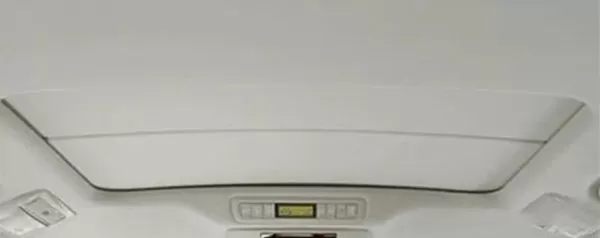
2. Uneven heating of the epidermis
Another cause of cuticle breakage is uneven heating of the cuticle. The skin is heated by quartz tubes and is assembled from multiple quartz tubes. During heating, since the convex part of the skin is closer to the heat source during pre-blowing, the heating is most complete and the temperature will be higher than other areas. Therefore, this kind of When heating the box, the position of the substrate during heating must be adjusted, and the corresponding parts of the skin must be adjusted to adapt to the temperature of the heating tube thermal sensor.
Bubble
Bubble defects, that is, the epidermis and the base material are partially not attached, causing air to be included. There are many reasons for bubbles, mainly caused by poor local flame treatment, glue that has not reached the activation temperature, insufficient vacuum adsorption force, and insufficient pre-stretching of the skin.

1. Poor local flame treatment
The local flame treatment is poor, because the shape of the PP base material door interior panel is relatively complex, with a curved surface and many grooves. When the flame treatment adjusts its surface tension, the local concave parts or groove parts are not flame treated enough, resulting in local surface The tension did not reach 38 dynes, resulting in poor adhesion and the formation of bubbles after vacuum adsorption.
2. The glue has not reached the activation temperature
The glue does not reach the activation temperature or exceeds the activation temperature. The glue activation temperature is 70°C. According to the glue activation curve, it can be seen that when the glue temperature is lower than 65°C or higher than 75°C, its activity is obviously insufficient. Therefore, when the temperature is not suitable, Its adhesion is insufficient, which can easily lead to bubble defects.

3. Insufficient vacuum adsorption force
The vacuum adsorption force is not enough. In an adsorption cycle, the force generated by the vacuum negative pressure is very important. When there is air leakage or there are not enough vacuum holes on the PP substrate, the vacuum negative pressure will not reach 0.09Mpa, so even if the glue reaches the activation temperature , but the bonding strength is not enough, resulting in bubble defects.
4. The epidermis is not fully pre-stretched
The epidermis is not fully pre-stretched. The purpose of epidermal pre-stretching is to stretch the epidermis to the critical point where elastic deformation turns to plastic deformation. If the epidermis is not fully pre-stretched, after a cycle of vacuum adsorption is completed, the remaining moisture inside the epidermis will The tension will gradually release, causing the skin to separate from the PP substrate before the glue is completely dry, resulting in bubbles.
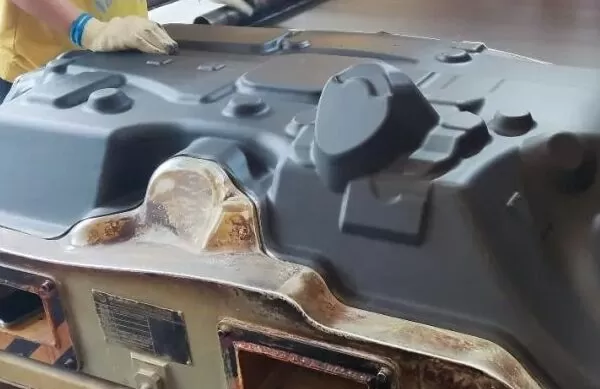
Folds
Wrinkle defects, that is, when the skin is adsorbed to the PP substrate, the skin has overlapping parts. The main causes of this defect are excessive pre-blowing bubbles and uneven heating.
1. The pre-blowing bubble is too large
Pre-blowing is a method of pre-stretching the skin. The skin and the mold are combined into a closed cavity, and hot air of a certain pressure is injected into the cavity to stretch the skin to the critical point where elastic deformation turns to plastic deformation. If pre-blowing If the bubbles are too large or the heating time is too long, the skin may be completely in a state of plastic deformation without any elasticity. It is difficult for the inelastic skin to fully fit on the complex-shaped PP substrate, resulting in wrinkle defects.
2. Uneven heating of the skin
Uneven heating of the skin is another cause of wrinkle defects. The essence is that after pre-blowing, the distance between the skin and the heating plate is different, causing the skin closest to the heating plate to be fully heated, and this part of the skin has reached the plastic deformation stage. , its ductility has been lost, while the skin far away from the heating plate is still in the elastic deformation stage and has good ductility. After vacuum adsorption, the skin adheres to the PP base material, and the skin in the area closer to the heating plate loses its elasticity and cannot shrink automatically. The skin here will retain the shape at the moment of adsorption, thus forming wrinkles.

Conclusion
The interior of a car is very different from the exterior. The exterior mainly embodies the visual effect and is for other people to watch, while the interior environment of the car is directly related to the physical and mental feelings of the driver and passengers; that is, because the exterior of the car It is for others to see, but what people really enjoy is the interior of the car, which emphasizes touch, feel, comfort, appreciation, etc. Therefore, in most cases, the interior design should reflect more people-oriented principles. For a successful car exterior design, we can say "very beautiful", and for a successful car interior design, it is evaluated as "very comfortable". Therefore, automobile interior design must be based on adapting to people's various needs, achieving the purpose of riding comfort, driving safety and convenience, and being ornamental.




